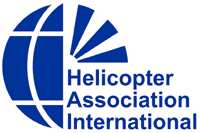Class-Specific Revision Targets "Fiercely Independent"
Operators
A decade ago, the International Business Aviation Council (IBAC)
finished the first release of its International Standard for
Business Aircraft Operation (IS-BAO), which has influenced the
widespread adoption of Safety Management Systems (SMS). Through
cooperation with Helicopter Association International (HAI) and
other industry groups, there's a new release which includes, in
some sections, separate language and operational criteria
applicable to a wide-range of helicopter operations.

“The IS-BAO standard is a great foundation,” notes
Stan Rose, Director of Safety for HAI. “Helicopter operators
are fiercely independent, and there are more mission-specific
criteria for rotorcraft. What IS-BAO does is create a baseline
document. We're looking for helicopter operators to get on the path
towards improved processes, which of course goes to
safety.”
Built around the cornerstone of SMS, IS-BAO is a set of
performance-based standards to assist aircraft operators in
determining best practices in operations, maintenance, training and
other related issues. The standards also provide context with
regards to regulations, standards and recommended practices
specified by States and the International Civil Aviation
Organization (ICAO).
“If you were to go back and look at the original imaging
for IS-BAO, it was always the intention to include
rotorcraft,” says IBAC Director General Don Spruston.
“The understanding was that most business aircraft operations
were fixed wing, so that was our initial focus, but we also noted
lots of operations included both fixed wing and
helicopters.”
“What we have now is a standard for everybody,” adds
IBAC’s Ray Rohr, former IS-BAO Standards Manager.
“There are the general provisions that apply to all
operators, and then there are some things – though not many
– that only apply to fixed-wing aircraft, or only to
helicopters. Those deal with issues such as equipment, primarily.
But 80 percent of the provisions are common to both.”
Noting the variety of missions flown by rotorcraft, Rose says
HAI is developing specific mission criteria for a wide range of
operations. “In addition to operations for business use,
helicopters are also used in air medical operations, law
enforcement, aerial tours, and so much more. The reason we made
these changes was to include those operators who don't have
standard operating practices in place. There hasn't been a gold
standard for those folks. They want the standard, to hold the
mirror up to themselves.”
The organizations also acknowledge the challenges of promoting
IS-BAO to some operators, particularly those with a small number of
aircraft. “To the person operating with five helicopters,
everything they do must generate some revenue, because many of them
are operating on tight budgets and margins,” says Rohr.
“What we must do is demonstrate how a well-planned,
well-executed SMS will help make them money.”
“Some 85-percent of this industry is small
operators,” adds HAI President Matt Zuccaro. “We would
like to be a facilitator for them to move forward into programs
that may be associated with larger operators. Our intent is to work
in a long-lasting relationship with those operators in a joint
effort to improve safety. We will give you everything we've got to
help move your operation up to a higher standard.”
 ANN's Daily Aero-Term (05.05.25): Circle To Runway (Runway Number)
ANN's Daily Aero-Term (05.05.25): Circle To Runway (Runway Number) ANN's Daily Aero-Linx (05.05.25)
ANN's Daily Aero-Linx (05.05.25) NTSB Prelim: De Havilland DHC-1
NTSB Prelim: De Havilland DHC-1 Classic Aero-TV: The Boeing Dreamliner -- Historic First Flight Coverage
Classic Aero-TV: The Boeing Dreamliner -- Historic First Flight Coverage Airborne-NextGen 05.06.25: AF Uncrewed Fighters, Drones v Planes, Joby Crew Test
Airborne-NextGen 05.06.25: AF Uncrewed Fighters, Drones v Planes, Joby Crew Test



